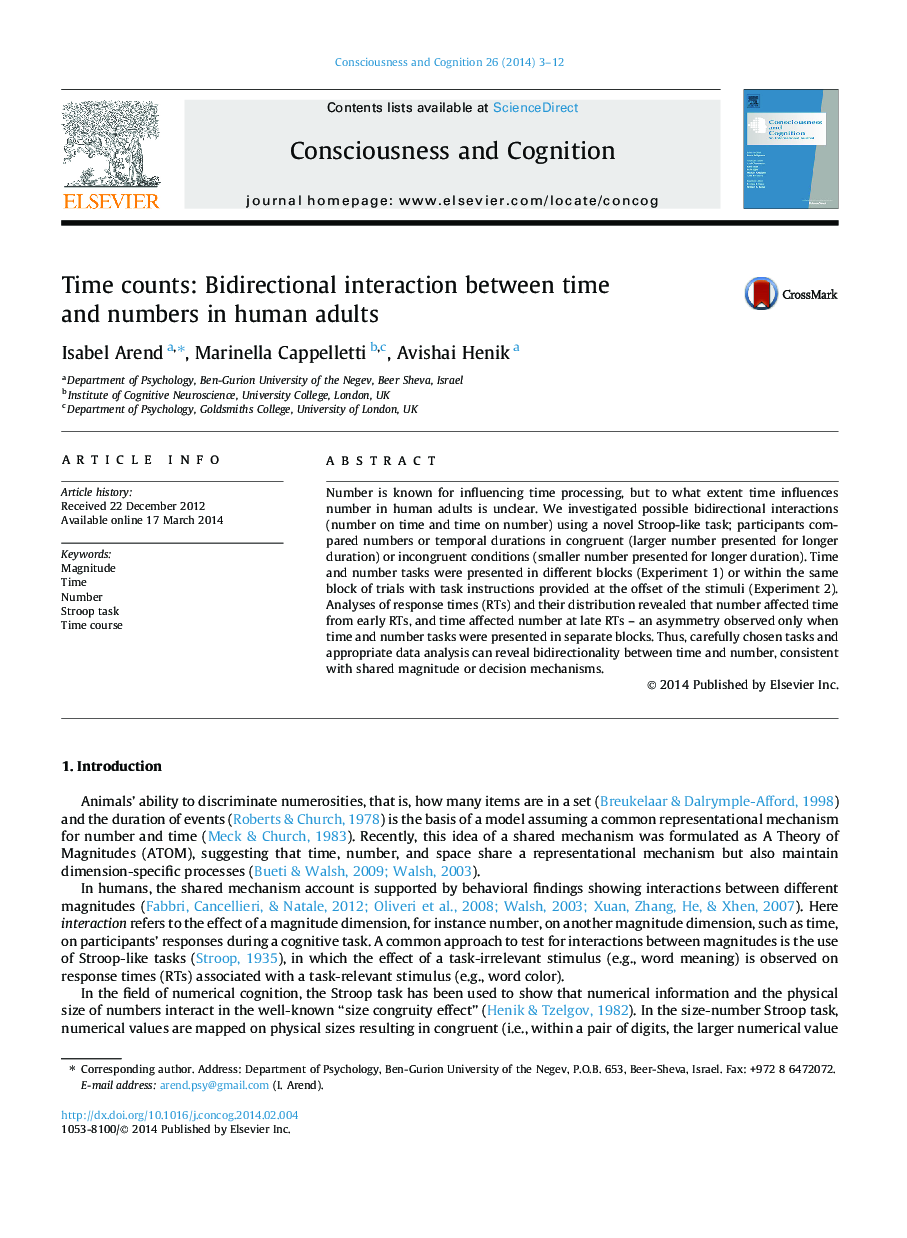| Article ID | Journal | Published Year | Pages | File Type |
|---|---|---|---|---|
| 7290096 | Consciousness and Cognition | 2014 | 10 Pages |
Abstract
Number is known for influencing time processing, but to what extent time influences number in human adults is unclear. We investigated possible bidirectional interactions (number on time and time on number) using a novel Stroop-like task; participants compared numbers or temporal durations in congruent (larger number presented for longer duration) or incongruent conditions (smaller number presented for longer duration). Time and number tasks were presented in different blocks (Experiment 1) or within the same block of trials with task instructions provided at the offset of the stimuli (Experiment 2). Analyses of response times (RTs) and their distribution revealed that number affected time from early RTs, and time affected number at late RTs - an asymmetry observed only when time and number tasks were presented in separate blocks. Thus, carefully chosen tasks and appropriate data analysis can reveal bidirectionality between time and number, consistent with shared magnitude or decision mechanisms.
Related Topics
Life Sciences
Neuroscience
Cognitive Neuroscience
Authors
Isabel Arend, Marinella Cappelletti, Avishai Henik,
